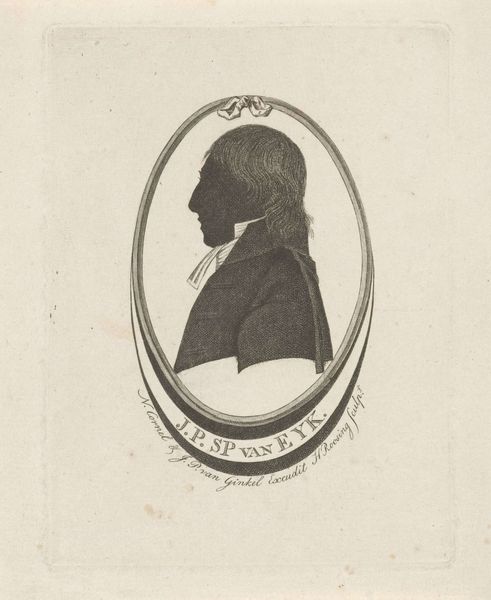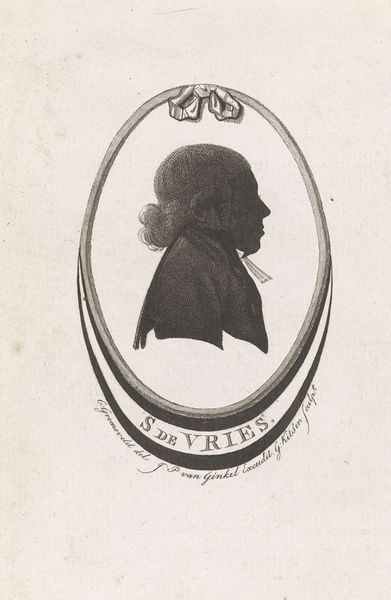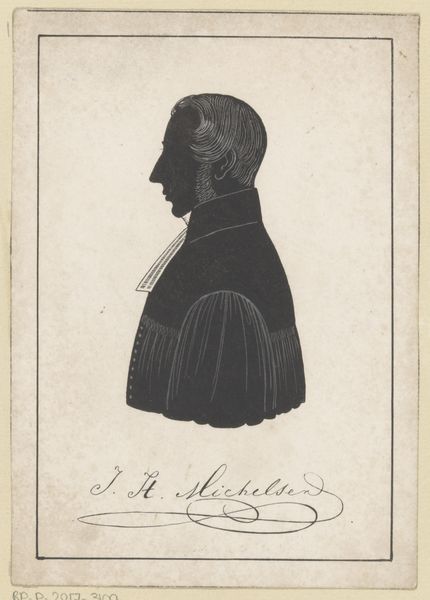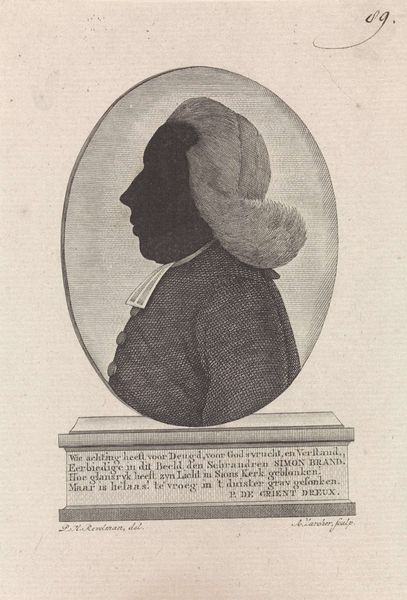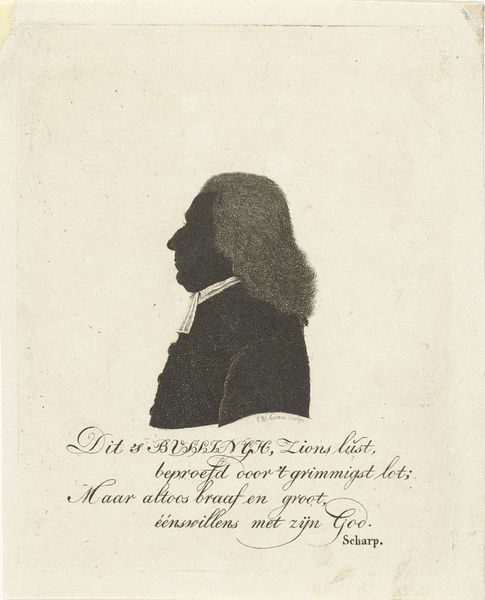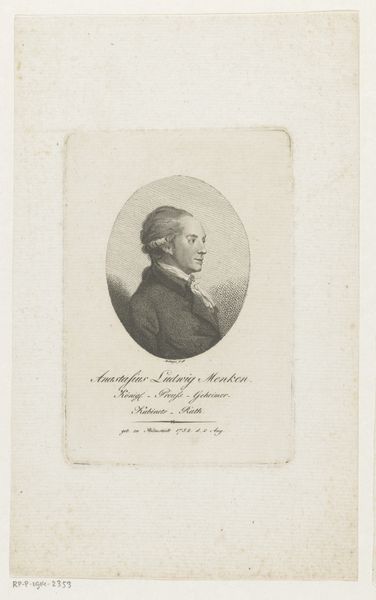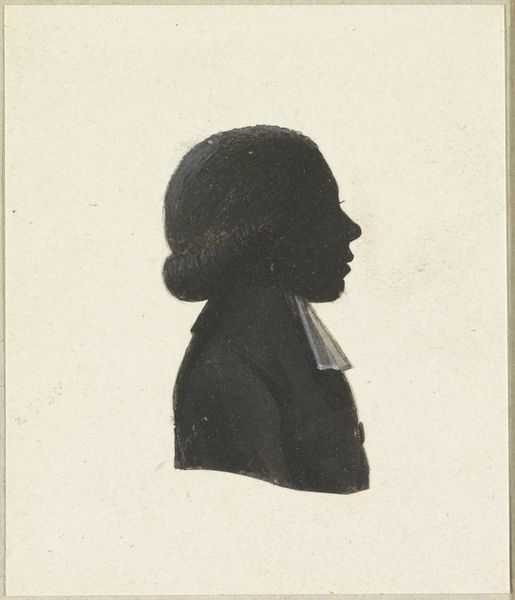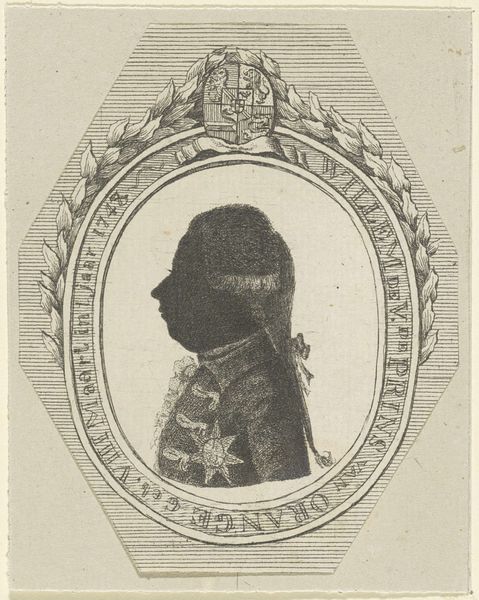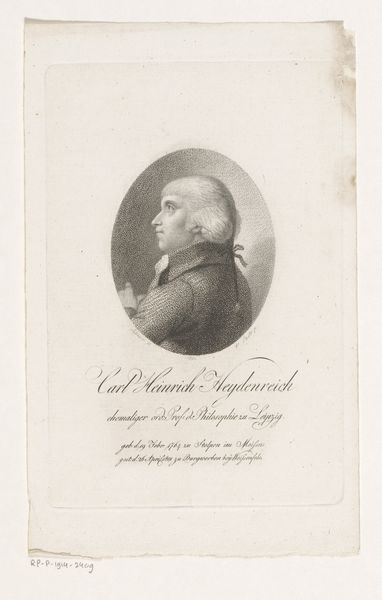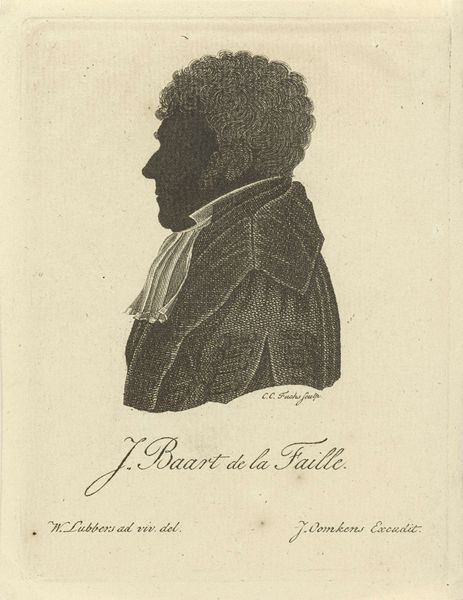
drawing, paper, ink
#
portrait
#
drawing
#
figuration
#
paper
#
ink
#
coloured pencil
#
academic-art
Dimensions: height 95 mm, width 78 mm
Copyright: Rijks Museum: Open Domain
Simon Schaasberg, a Dutch artist, created this silhouette of an unknown clergyman. Silhouettes like this were popular in the late 18th and early 19th centuries, offering a relatively inexpensive way to capture a person's likeness. Consider the social context: the Dutch Republic, with its strong mercantile class and reformed religious traditions, emphasized individual identity and social standing. Ministers held significant influence, and their portraits, even in silhouette, served as markers of status within their communities. The stark black and white rendering speaks to the austere aesthetics often associated with Protestant values. To fully understand this image, we would need to delve into local archives, church records, and biographical dictionaries to identify the sitter. Only then can we appreciate the full social and institutional context of this seemingly simple portrait. The meaning of art, after all, is contingent on its history.
Comments
No comments
Be the first to comment and join the conversation on the ultimate creative platform.


